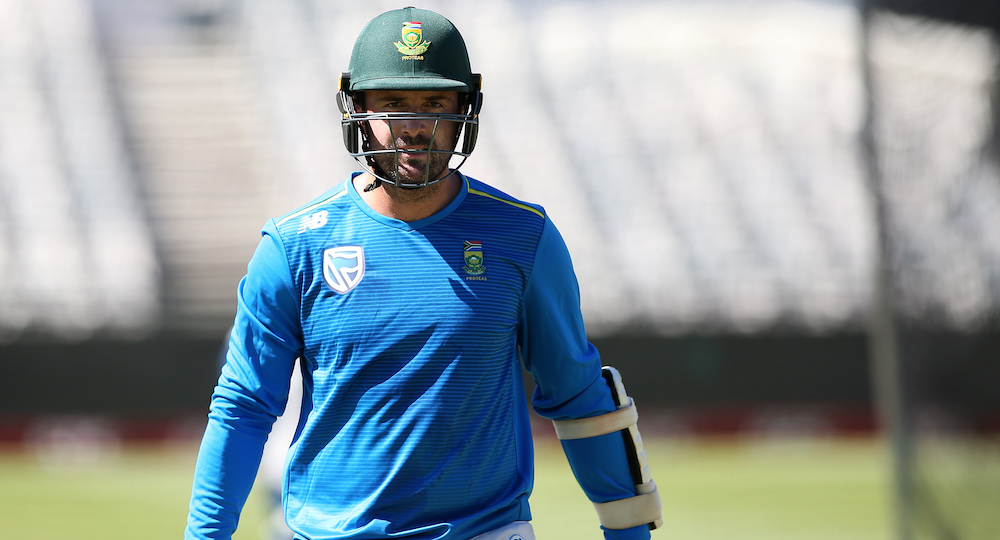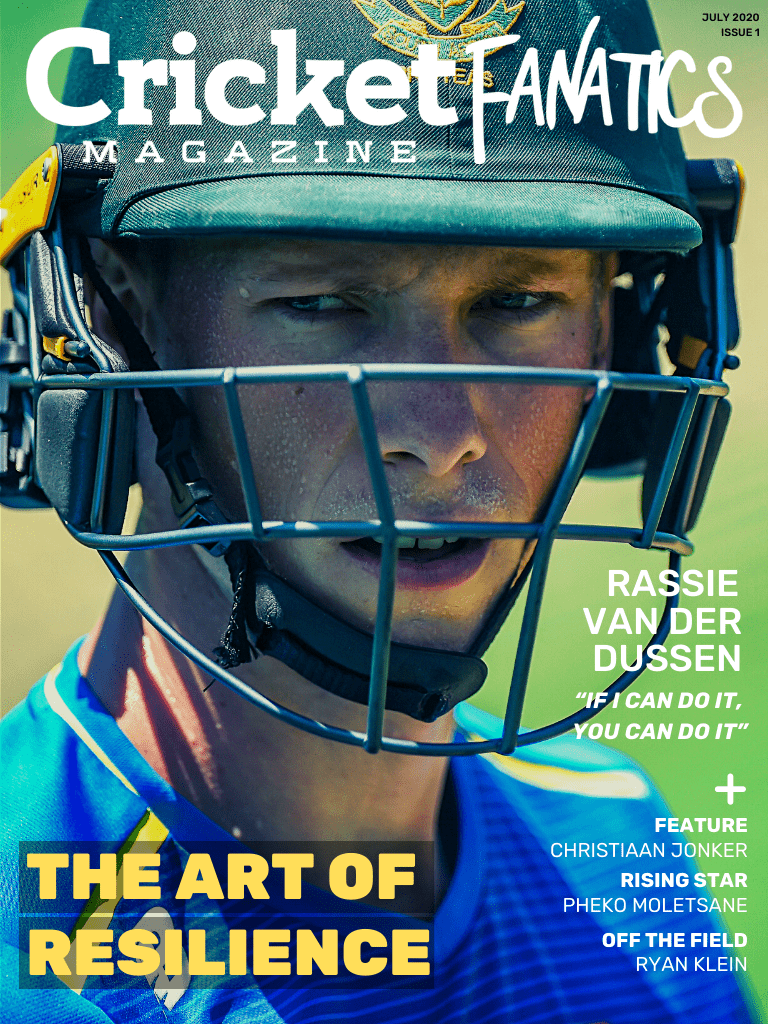
Table of Contents
EDITOR'S NOTE
The Art of Resilience
Khalid Mohidin
Founder and Editor - Cricket Fanatics Magazine
Cricket… One of the most complex and strategic games in the world. Not only does this sport test you physically and mentally, but it's also unequivocally emotionally taxing.
This is a game that challenges your patience, belief, confidence, morals and will to succeed, relying not only on natural talent but on dedication and sacrifice as the key to success.
Cricket in South Africa is all of this amplified and being a cricketer in this country isn’t the easiest career path to choose.
There is, however, one particular quality that has helped certain players fulfil their dreams – Resilience.
This is a quality that is admirable and deserves to be celebrated. It’s a quality that we are acknowledging in our first issue of our Monthly Digital Magazine.
There are so many stories in the game that stand out and we have brought to you some amazing stories that teach the Art of Resilience. The will power to never give up on one’s dreams.
There’s a Rocky Balboa quote that sums up perfectly what resilience is: “It ain't about how hard you hit. It's about how hard you can get hit and keep moving forward; how much you can take and keep moving forward.”
This intangible attribute deserves time in the spotlight and we provide exactly that.
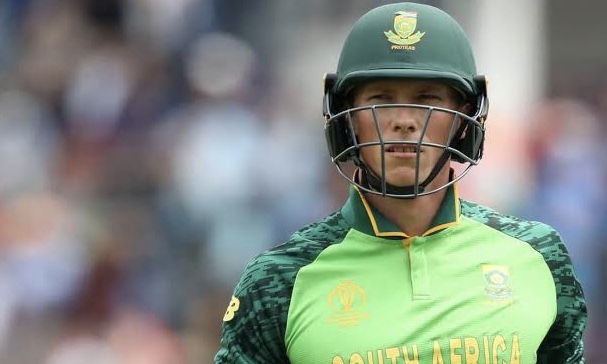
“IF I CAN DO IT, YOU CAN DO IT” – RASSIE VAN DER DUSSEN
By Khalid Mohidin
Rassie van der Dussen’s rise is a case study for any young aspiring cricketer, emphasising that they should never give up on their dreams.
In his debut year, his contributions for the Lions saw them win two trophies. He was also a key player for the inaugural Mzansi Super League champions the Jozi Stars, where he finished as top scorer in the competition.
His Proteas call-up and World Cup selection was based on consistent performances on the domestic scene and he carried that over into his performances for the Proteas in matches leading up to his World Cup call-up and during the tournament.
Rassie’s story is an example for all young cricketers conveying the message: that no matter how hard it may seem to reach your dream or how far it may be from your grasp, never give up on it. Resilience pays off.
His inspiring drive for success and never-say-never intrinsic motivation has fuelled his incredibly consistent performances.
“I’ve come a long way, making my debut at 29, but I wouldn’t have had it any other way,” Van der Dussen tells Cricket Fanatics Magazine.
“Things in life happen the way it should happen. I always tell young players ‘If I can do it you can do it’.
“I’m not a special… Quinny or an AB... who got into the team at the age of 19 or 20, I’ve had to work hard,” he humbly added.
“But in life, if you work hard and you put everything you can into something that you want to achieve, anything can happen… you never know if it’s going to come, but that doesn’t mean you shouldn’t give it your all.”
Van der Dussen picked up two CSA Awards and was nominated in almost every category, a true testimony of his incredible 2018/19 season, which was the season when he made his debut for the Proteas.
“Obviously I’m very honoured to win two awards. I’m also honoured to be nominated in so many other categories so it’s a special night. But I think any player will tell you it’s not about the awards,” Van der Dussen explained.
“It’s about being part of a winning team and putting in match-winning performances – whether it be for your domestic side or, even more special, your country. I’m very excited but winning awards is just the cherry on top.”
Despite all his achievements and incredible performances, Van der Dussen still found time to pay homage to external factors which played a role in his achievements.
“I’ve played a lot of domestic cricket in my life, so I’m experienced at franchise level and provincial level. So I sort of know my game by now and I’ve worked it out," he continued.
“But also a lot of credit must go to my batting coach at the Lions – Justin Sammons – over the last two years him and I have put in a lot of work and he’s taken a lot of time and put in a lot of effort into me.
“We’ve dissected my game and tried to improve on my weaknesses and strengths so it’s not a secret that over the last few years things have gone well for me,” he said.
“But in general I’ve trained hard all my life… like I said you never know when and if it’s going to pay off and I suppose perseverance always counts for a lot.”
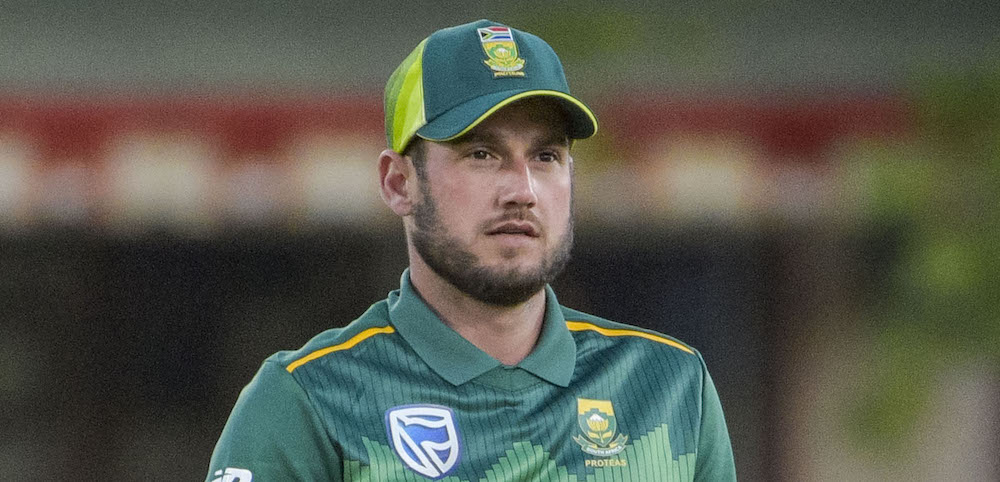
“I was born with a cricket bat” – Christiaan Jonker
By Ongama Gcwabe
Former Warriors batter, Christiaan Jonker, opens up about his journey – from receiving a national call-up in 2018 to having mental health issues and how SACA played a role through this turbulent period in his life.
“I can’t tell you the exact year I started playing the game, I think I was born with a cricket bat,” Jonker says exclusively to Cricket Fanatics Magazine.
There’s no better way to start a story. A story of a cricketer whose career was hard not to notice because of his unique outlook to the game.
Like most cricketers, Jonker represented his province [North West] in all age-groups through to the province’s ‘semi-pro’ side as it was called at the time. But something would happen at semi-pro level that would make his story take a sharp turn.
In and out of the Lions squad, touring with the guys with no game time, Jonker decided to take a break from the game and go work with his Dad.
A month into the job, Jonker knew that he was frustrated from not doing what he loves, which was obviously to smash bowlers around the park.
But it was missing the team environment, competing and being part of something bigger than himself that frustrated Jonker.
Eventually, he got back in the park and continued pursuing his dream of being a Protea. Seeking better opportunities and career evolution, he decided to leave North West.
“I actually flew down to Oudtshoorn, spoke with the CEO [Albertus Kennedy] face-to-face and he was happy to take me in,” Jonker explained.
“That changed my life again. I basically changed my goals – I wanted to play cricket and enjoy it and only focus on that instead of focusing on politics.
“That was basically the best six months to a year of my life, playing for SWD. I broke the record of most first-class runs.
“Eventually I got a run, they chose me to play a 4-Day game for the Warriors. I think I scored 64 on my debut smashing bowlers all over the Wanderers.
“A few of weeks later I got a call from Piet Botha [former Warriors Coach] that I was contracted with the Warriors and was welcomed in the family. That’s when I learned about being a family and playing for each other.
“Then one day, out of the blue, I got a call that I was selected to play in the series against India. I don’t think it settled in until two days later. That’s when it actually sank in.”
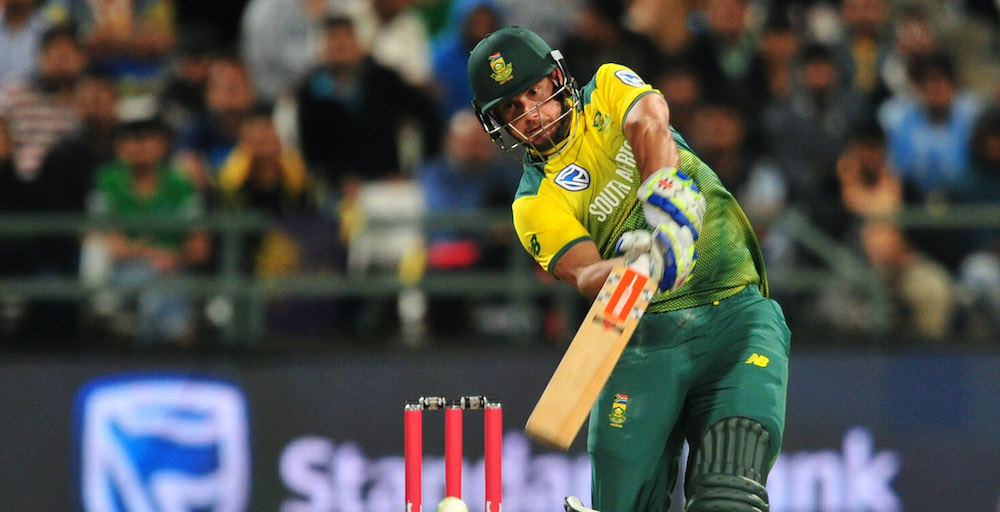
Jonker played four international matches including two ODIs and two T20Is, all in 2018.
He was well into the plans of the Proteas’ 2019 World Cup campaign, under coach Ottis Gibson and captain Faf du Plessis.
The first MSL got underway in 2018 and Jonker was in the Nelson Mandela Bay Giants squad for the month-long tournament. Pretty much after that, we didn’t see Jonker again.
Telling his story for the first time, Jonker said: “I’m more open about it [Mental health].
“It’s more of that thing where it’s everything [that takes a toll on you]. It’s been 15 years of cricket nonstop, 15 years of competing, 15 years playing competitive pressure situations.”
Throughout this interview, I felt inspired because I was in conversation with someone who is in the process to get through one of the toughest times in a man’s life.
Some people may not be aware that some professional cricketers do go through these “hurdles” in their careers.
The South African Cricketers Association [SACA] is aware and has programs in place to guide players in need.
“SACA has a comprehensive personal development programme which is available to all players. The programme focuses on life skills, dual-career, financial wellness and mental wellness,” said JP van Wyk, SACA Player Services Manager.
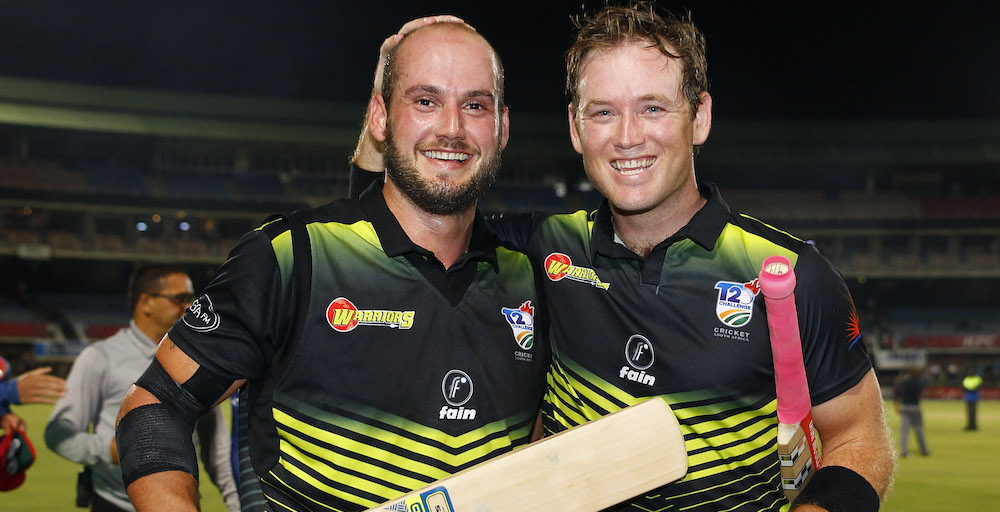
What is so amazing about Jonker’s story is how he was able to address the issue with the help from SACA. Although he is still in recovery process, he is able to find positives and the strength to continue pursuing his dreams.
Christiaan Jonker is back playing cricket again. He has more desire to achieve bigger things in his career and also wants to have a positive impact on his teammates.
“Another thing that came out of this is that I can see in people’s [teammates] eyes that they don’t know how to handle this situation. I always tell them: ‘Ask me the questions. Ask me what is depression. Ask me how it was because if you don’t you’ll never know about it.’
“Look in international cricket, Glenn Maxwell as well went through it. It’s such a hectic schedule and pressure situation.
“Doors opened for me because I have a diploma in Sport Psychology but now I want to get a degree. I can help other people. If I could help someone in his life I will be satisfied,” Jonker concluded passionately.
In terms of educating players and providing professional support services, SACA is at the forefront of things.
All that Cricket Fanatics can do is to respect cricketers and support them however we can.
What I hope Jonker’s story teaches cricketers and people at large is that it is important to take time away from pressure situations, be it a break from a sport or from work.
If you’re out there and you relate to this story, know that someone went through the same thing and got back up stronger through finding help. You can also do the same.
“NOW I’M ONE OF THEM” – PITE VAN BILJON
By Abhai Sawkar
It was a long trying road for Pite van Biljon, but he proved how resilience and hard work can help you fulfil your dreams, which for him was becoming a Protea.
International cricket is the ultimate dream: you get to proudly represent your country and it’s a stern test of mental toughness.
Some progress fairly early to the highest level of the game, while others have to wait it out, perform over a longer period of time, and finally get the much-coveted entry after the arduous hard yards. Pite van Biljon’s case is the latter, and it was an unbelievable feeling when he received the news for the first time.
Having turned 34 in April, the clean-hitting batsman got his big break for the home T20I series against England. The fact that the call-up happened relatively later in his career makes it all the more remarkable, given the well-sustained efforts he’s put in over the years.
A hand injury during a pre-game warm-up session kept him on the sidelines, but fortunately, he was retained for the next T20I series against Australia. Meeting up with the rest of the Proteas was second to none, without any doubts.
“It felt great when I received the call, in fact, I received the call just before the England series,” said van Biljon to Cricket Fanatics Magazine.
“But then during my first practice, I dove for a catch that just landed short. I couldn’t quite get my hands underneath, caught my finger awkwardly and tore my webbing, so that put me out of that series.
“I ended up debuting against the Aussies. But yes, when I received the call it was amazing, I remember joining up with the rest of the team at the airport. It was a surreal feeling seeing the guys in their travel gear walk my way and now I’m one of them.”
Despite a tough series, Van Biljon had the opportunity to play all three games against Australia. The time spent on field was both something to remember as well as a key reality check, too.
He managed a total of 24 runs, and the learning curve was noticeably steep. But with all things considered, Van Biljon prefers to keep it simple and not overthink, even when the pressure level is higher.
“I wouldn’t say I’ve experienced a whole lot but definitely the fact that the other guys you play may seem like world-class superstars, which they are.
“But when you’re on the field with them or against them, it’s more like you’re there to compete with another team. At the end of the day, you’ve got to try to hit the white ball as far and as hard as possible, try and catch it, throw it straight.
“For me, the thing I took out of it is the difference between what you see on TV and what you experience out there in the middle. The commentators and the adverts all hype the game up big-time. You’re still playing a game of cricket and trying to outperform.”
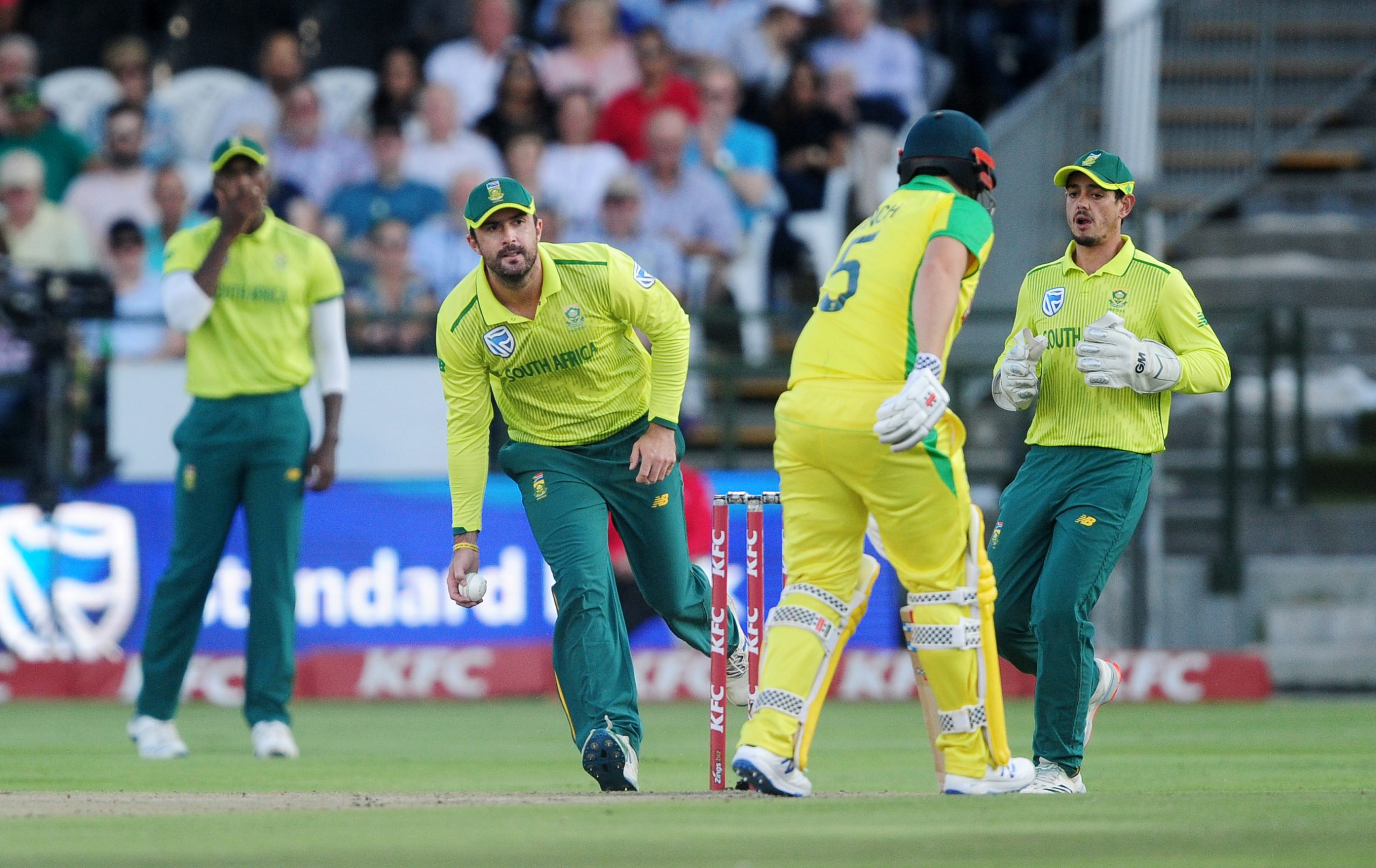
Going back to his early days, Van Biljon has often had to overcome multiple obstacles to finally reach where he is now. There was intense competition at franchise level, and that meant that he’d be playing in the semi-professional circuit more frequently than expected.
However, this only ensured that the Bloemfontein native would be more prepared when eventually given a chance at franchise cricket.
Following his impressive exploits for Free State and Northerns, he broke into the VKB Knights set up in the 2012-13 season and made his 4-day debut for them in the very next season. The extended period of fine-tuning his game at the provincial level perfectly enabled him to burst onto the scene with aplomb.
After establishing himself well across formats, he was among the certainties to take part in the inaugural Mzansi Super League. Interestingly, he was one of a few Knights players drafted in the new South African T20 franchise league. He created a reputation for producing game-changing cameos when coming in at No 5 or No 6.
However, the more prominent highlight was the 2019 MSL – not only did he bat more frequently, but he also achieved more impactful returns throughout the tournament. His new team, the Tshwane Spartans, went on to finish as runners-up. But more importantly, the prolonged wait to don the green and gold came to an end soon after.
“Looking at my experiences through the provincial setup, franchise setup, and finally international cricket, I’ve had to knock the door down and I’ve had a few good years playing amateur cricket for Free State. I had one or two good years playing for Northerns, and I had to earn my stripes to get into the franchise setup, which was very good at the time,” he said.
“From what I remember, I averaged around 280 in one season right before I got a go in franchise cricket. I got a century in my very first game, and I was the fourth-leading run-scorer in 4-day cricket during my second year. So I’d say I knew I was up there competing with some of the best guys in the country.
“For myself, I knew I could compete nicely with and against them. Doing well and winning the first MSL [with the Jozi Stars] and improving on a personal note the next year and the Spartans getting to the finals were all big points in getting me to international cricket.”
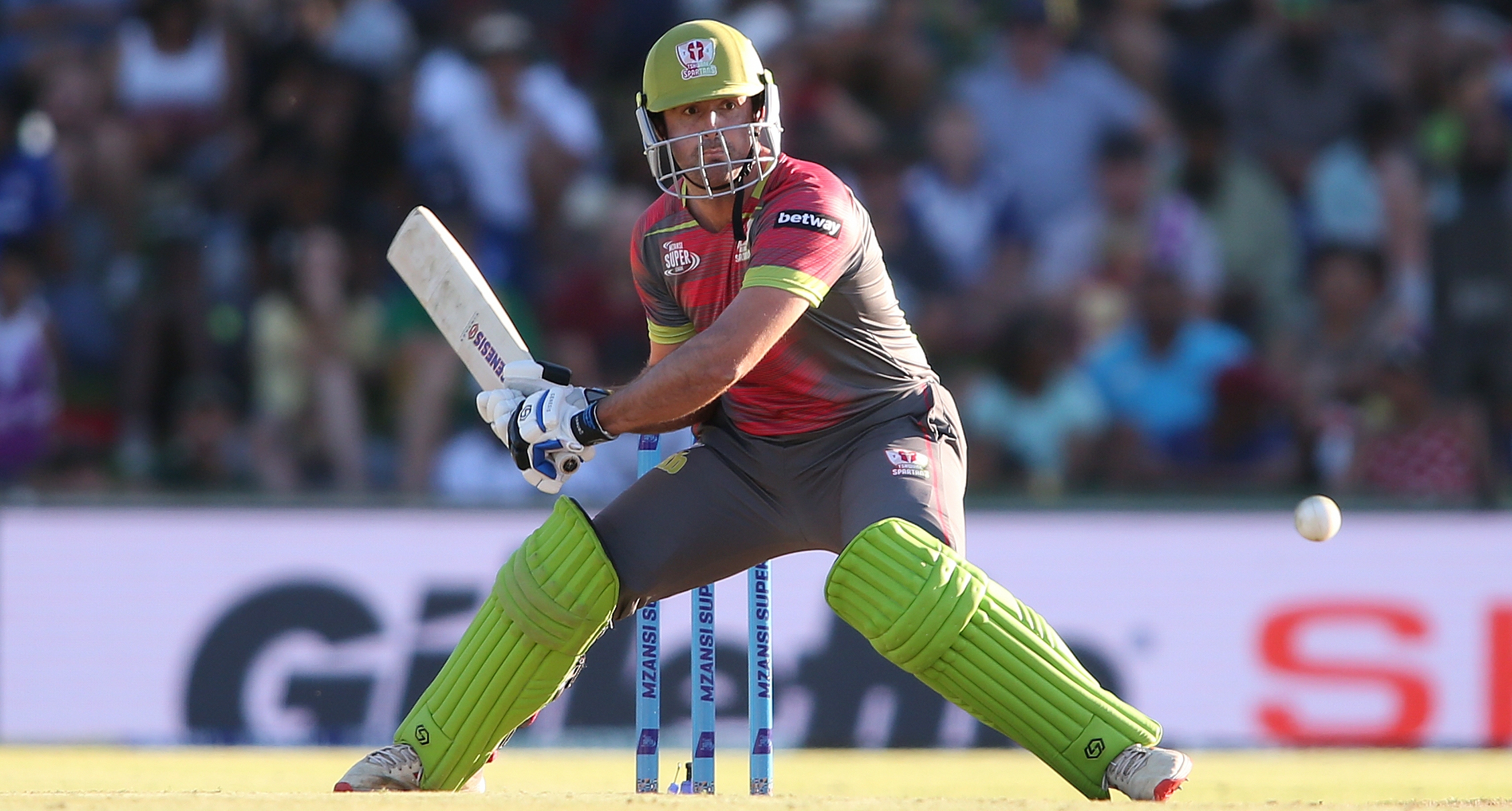
Throughout his career, Van Biljon has been tasked with batting at various positions. He bats further up the order in the longer format, but he’s made the finisher role his own in the MSL.
Considering the fact that most of the recent limited-overs Proteas debutants have staked a claim through their MSL accolades, Van Biljon is grateful for the fact that he’s maintained reliable consistency heading into the big tournament.
“In the MSL, I’ve done quite well since I’ve played for strong teams – so I’ve had the momentum on my side. If you have an off game, you make 6 from 5 or something like that and the team still gets over the line, it’s like you’re riding the wave of the team, so it was reasonably easy to kick on,” he explained.
“For the Knights, I’m actually a top-order batsman and not a finisher, so it’s a bit of a different role but I enjoy it. When you walk out there, you’ve got to get on with it. If you make 10 off 4, you’ve often done a good job and made a good impact. What’s also helped me is that I’ve gone into both MSLs in strong form coming from 4-day cricket.”
Accelerating right from the get-go isn’t quite a clear-cut task, and it requires a prudent modus operandi. For Van Biljon, it’s mostly a mental game involving trusting judgment and backing the attacking intuition to take over.
There’s little to no margin for error especially in the back end of the innings, and momentum shifts are commonplace.
At the end of the day, knowledge of conditions as well as shot choice and how much a competitive total might be will dictate much of the approach.
“You more or less know what the opposition is aiming to do, the wickets may be slower and the bowlers may go for cutters. Ultimately you need to settle on a boundary option, both on the leg side and the offside. If you get something in your favourite area, you can put it away,” he stated.
“Otherwise, bat on ball is very important and you never want to waste deliveries towards the end of the innings. Two or three dot balls can be the momentum shift and if you hit a boundary, it’s still a good over.
“At inland venues, you’d want to beat the inner ring and on the coastal grounds you’d want to beat the boundary riders, especially since the wickets are a bit harder to hit through the line.”
We’ve seen Van Biljon the destructive T20 player, but he enjoys the longer format to a greater degree. In fact, he’s played over 100 first-class matches and averages 43. Last season, he scored an unbelievable 218 against the Dolphins in October.
He’s made significant progress across formats, and the ambition to play Test cricket is stronger than ever.
There have been multiple cricketers that debuted fairly late in their careers and have shone frequently for their team, and should Van Biljon continue to produce tall scores, he’ll be in striking distance.
In fact, four of the last five Test debutants for South Africa were 30 or above at the time of their first cap. At the same time, he’s insistent that the learning process never stops and he’s finding more ways to further fine-tune his repertoire.
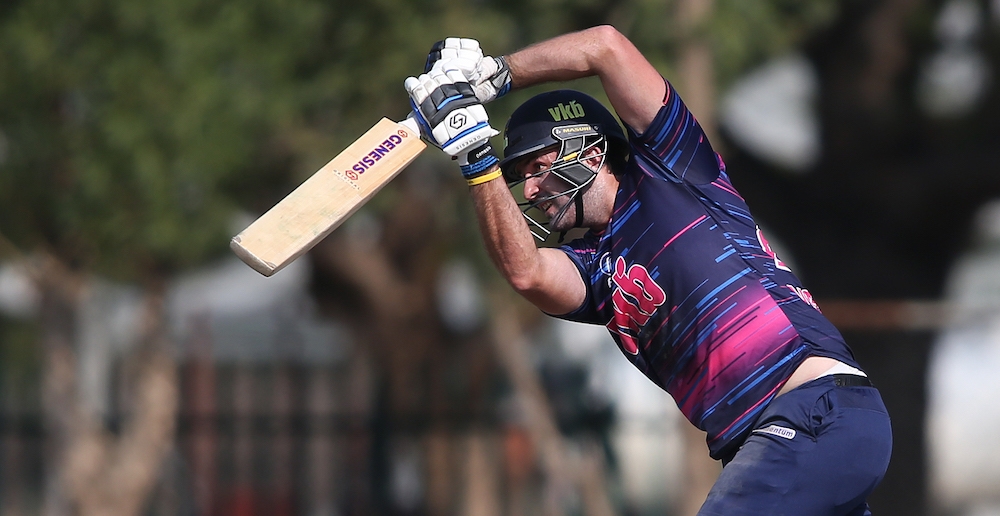
“Last season was probably the best I’ve batted over the course of a consistent period of time. I’ve found a technique that I really like and was most comfortable as well.
“I was in a strong mindset as well that allowed me to compete for long periods of time. It hasn’t been easy to get this far and I still want to improve,” he insisted.
“I still have a long way to go to where I want to be with my batting, so it’s a constant work in progress. But I’d say in order to go further to Test cricket, I’ve always seen myself as a red-ball player. I enjoy the phases you go through in the game.
“It’s a little bit slower but there’s longer pressure, facing pace bowling, facing spin bowling, and the taste of the beer after the last day. The reward is so much sweeter to score a double hundred or take a great catch to swing the game.
“Red-ball cricket has always fascinated me and I like to believe it’s my strongest format. I’m not sure what my chances are for Test cricket but I will continue to keep pushing and giving the youngsters a good crack. It’s still my goal to play Tests, not just one or two games, but a solid career playing Test cricket.”
The path to international honours can vary, but finally rising to the cream of the crop feels like nothing else. For van Biljon, it was well worth the wait.
Competition can amplify exponentially when several compete for fewer spots, and perseverance often comes in handy. With a dependable work ethic and earnest focus, he’s had copious achievements in domestic cricket, all of which have paid off richly.
Advertisement
Ezra Poole's Online Wicketkeeping Academy
Learn how to Master The Craft of Wicketkeeping Without Having to Hire a Full-Time Personal Coach.
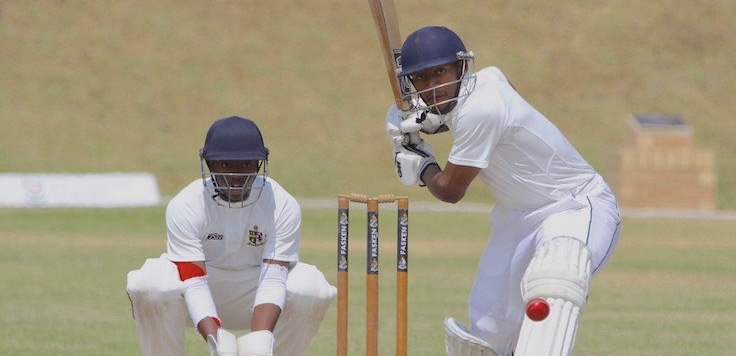
RISING STAR: PHEKO MOLETSANE EMBODIES THE PHRASE “HARD WORK PAYS OFF”
By Khalid Mohidin
Pheko Moletsane has been described as one of the hardest working young cricketers in the game. Now he gears up to showcase his talent at the ICC U19 World Cup for South Africa.
There has been an increase in popularity with spinning all-rounders in South Africa.
Over the last two seasons, we have seen the likes of Wihan Lubbe, George Linde, Bjorn Fortuin and Senuran Muthusamy become crucial in tournaments like the Mzansi Super League, as well as in the 4-Day Franchise Series, One-Day Cup and senior Provincial cricket.
The U19 World Cup will be no different.
Having players who can produce stellar performances with both bat and ball will be crucial for every team in the tournament.
Spinners, in particular, are becoming more valuable when it comes to stemming the run rate and striking at crucial stages of the match.
Like the players mentioned above, Pheko Moletsane is another driven youngster who is striving to live his dream of becoming a professional cricketer.
Although he has been described by some as a spin-bowling all-rounder, he sees himself as a batting all-rounder because he believes his natural ability leans towards swinging the willow.
A St Andrew’s School pupil, he has been tipped as an amazing prospect, with his selection in the SA U19 World Cup squad brightening the spotlight above the young man’s head.
He made the South African Colts team in Grade 10 after an inspiring tournament for his province where he finished with 14 wickets in the tournament in the 2017/18 season.
Pheko also played a pivotal role in helping Saints become national champions in the Coca-Cola Schools T20 Challenge in 2018, a tournament where he took six wickets and scored 71 runs which included a gutsy 51.
Injuries set him back tremendously in 2019, but he recovered well to fight for a spot in the SA U19 World Cup squad, which he achieved.
“I’ve had a few niggles and injuries during my time with the Talent Acceleration Programme,” Moletsane says exclusively to Cricket Fanatics Magazine.
“I was meant to play for South Africa U19 against Pakistan, but then I sustained an injury a day before I was meant to make my debut and I was out for six weeks.
“Before the matches against the senior provincial teams I fractured my hand, so I was out for six to eight weeks doing rehabilitation and conditioning.
“It has been a journey that wasn’t pleasant but I fought hard.”
Pheko’s talent is unquestionable, but he doesn’t allow that to carry him. He is a youngster whose philosophy is defined by hard work.
“I’m a very hard-working personality that strives on (a good) work ethic,” said Moletsane when asked what defines him as a player.
“All I would like to do is be a very good team player who fights hard for the team. I want to base my game on hard-working habits so I can be better for the team.
“It’s a massive honour,” he added bout being selected in the SA U19 World Cup squad.
“I had a few setbacks throughout the journey so it really feels good to have the opportunity to represent my country.
“I will do my utmost best to push myself harder because this is something that is bigger than me and I’d like to make my country proud.”
His fellow SA U19 and St Andrew’s teammate Gerald Coetzee, who too was selected in the World Cup squad, echoed Pheko’s self-analysis.
“I know Pheks for a long time,” says Coetzee exclusively to Cricket Fanatics Magazine.
“He is one of the hardest workers that I know. He sacrifices a lot for his cricket. He is one of those players who has never just relied on his talent.
“He worked really hard to get where he is and I’m really happy for him. He really deserves it (his World Cup selection).”
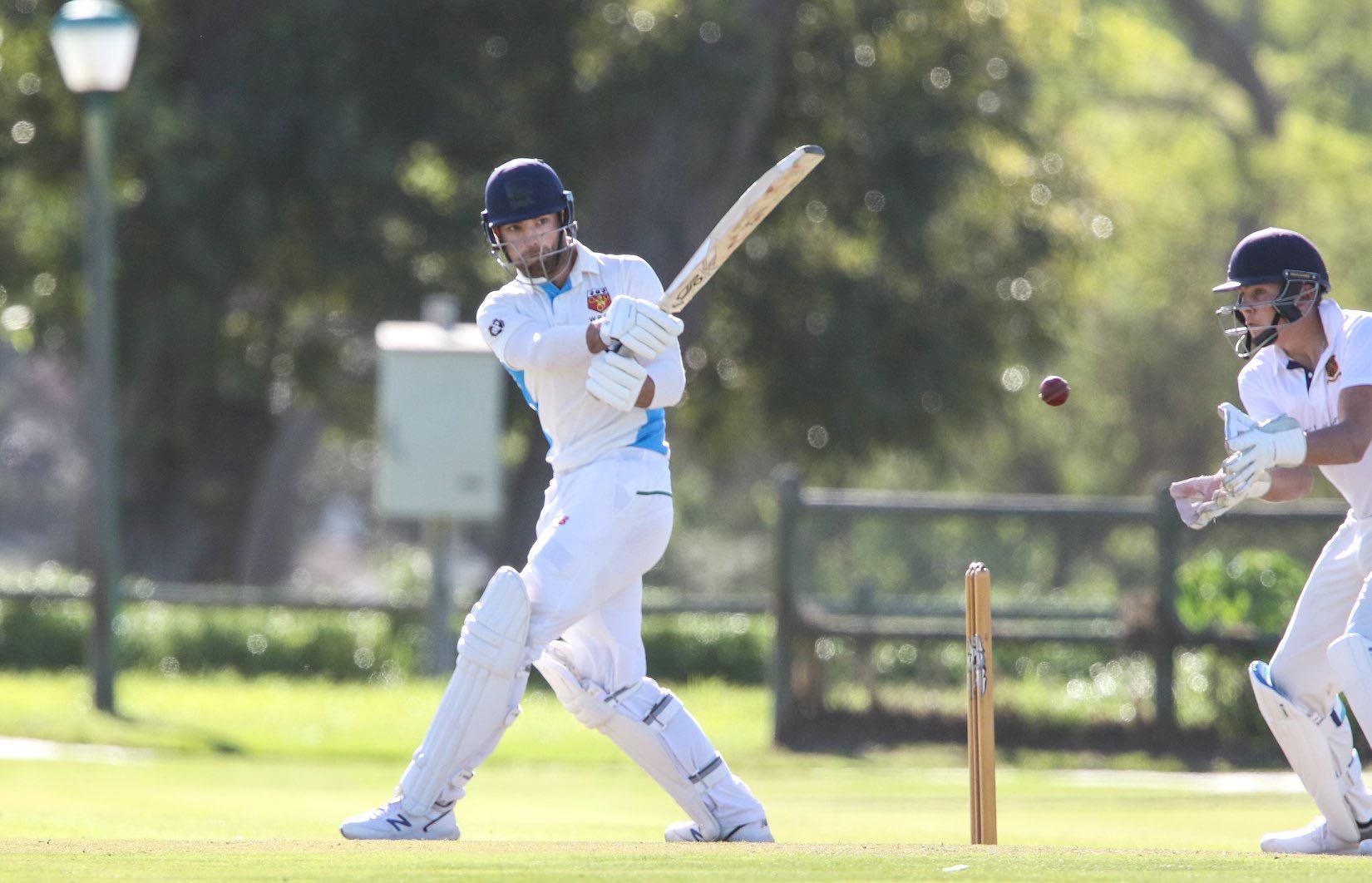
OFF THE FIELD WITH RYAN KLEIN
By Nabeelah Fakier

If you weren’t a cricket player, what would you be?
A pilot, ever since I was a little boy I’ve loved the movie Top Gun.
Who do you usually support in the IPL?
Royal Challengers Bangalore.

Coffee, tea or alcohol?
Depends largely on the situation but I’d have to go coffee.
If you were stuck on a deserted island, and you only had 3 things with you, what would it be?
My phone, a speaker and some whiskey
What are some of your hobbies?
I enjoy attempting to play golf, cycling along the beachfront and playing Xbox.
Who’s your favourite cricket player & why?
Pat Cummins. Ever since he came onto the International scene I’ve been following him. He has a top work ethic and carries himself well on and off the cricket field.
I’m very envious of the pace he bowls at, it would be lovely if he could just pass on a few km/h to me! He is a bowler that can hold the bat and that’s how I see my role within a team which is also why he’s my favourite.
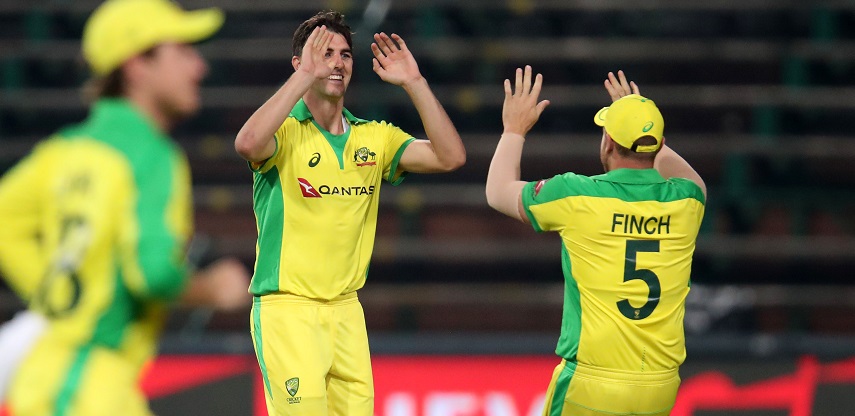
What are you currently watching on Netflix?
How to get away with murder.
What are some of your hobbies?
I enjoy attempting to play golf, cycling along the beachfront and playing Xbox.
What is your dream ground to play on?
The Adelaide Oval under lights with a pink ball.
Which other sport do you enjoy watching & which team do you support?
Football, Manchester United.

Who’s your favourite gaming character?
I don’t really play many other games besides sports games but my favourite growing up was Mario from Mario Kart.
What’s your favourite game to play and why?
I’d have to go with FIFA but Fortnite is a close second. I’m a keen football fan and lots of my mates play it as well.
What was the experience like being part of Hashim’s Army?
It was a lovely day out at Newlands watching the boys take on the Poms! It’s always good to be supporting the Proteas with a couple of cold ones and great company.
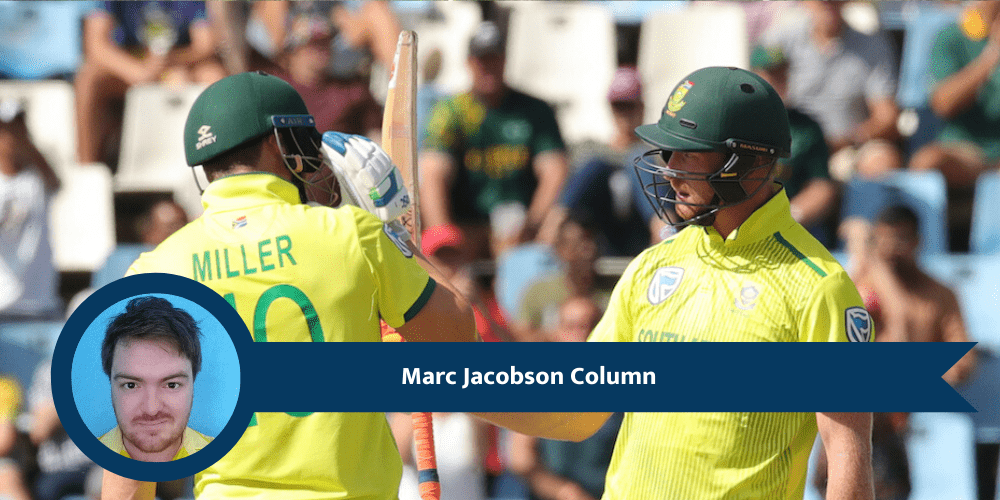
HEINRICH KLAASEN A PERFECT MOULD FOR THE PROTEAS
By Marc Jacobson
Expressionless, resilient and composed. Those are the three words that spring to mind when I consider Heinrich Klaasen’s contribution to the current Proteas’ delicate fold of players.
The Proteas have had somewhat of a tumultuous summer of cricket – more so bad than good, unfortunately.
After what was a disastrous 2019 Cricket World Cup for the men in green and gold, followed by a Test series drubbing by India in September, the Proteas were left licking their wounds with a cloud of uncertainty plaguing their future.
With respected and renowned stalwarts – Mark Boucher (head coach), Jacques Kallis (batting consultant) and Graeme Smith (CSA director of cricket) – having then taken over some of the administrative duties of the national outfit late last year, there was some cause for optimism.
Along toured in December the World Champions England, a team brewing with confidence that had all intentions of capitalizing against a fragile and vulnerable Proteas outfit.
Despite a promising performance in their first Test in Centurion – which South Africa subsequently won – the home side fell way short in their following three tests to lose the series 3-1.
Thanks to a washed-out One Day International at Kingsmead (again), the ODI series was shared 1-1, before England came up trumps 2-1 in the more competitive T20 series.
Much still seemed gloomy as South Africa were unable to right their wrongs, dot their I’s and cross their T’s against Australia either, getting smashed in two T20 matches to lose that series 2-1, as well.
During the ODI series against the Aussies, up-stepped Klaasen to the plate – in an environment where the Proteas have mixed and matched all sorts of combinations and selections throughout the summer inbound tours in which to decipher their formula.
Fortunately, the Proteas have reaped some success in the ODI series so far, having racked up impressive wins in the first two matches to already clinch the three-match series.
They beat Australia by 74 runs in Paarl, before surging to a six-wicket victory in Bloemfontein.
Klaasen has been the stand-out batsman in both ODIs and has contributed the most combined runs out of any other batsman – including in the Australian line-up.
It is important to note that the Pretoria-born wicketkeeper-batsman made his Test debut against India in that torrid series last September where he only managed to score 11 runs from his two innings’.
With so much uncertainty looming over the Proteas camp, Klaasen returned to the mix for the ODI series against Australia on a presumed ‘trial’ basis since his Test debut slump.
In the turn of the new year, Klaasen, who was schooled at Hoërskool Menlopark in Pretoria and who leads the Titans in the local leagues, started to make a statement during the Momentum One Day Cup at the start of 2020.
He contributed sternly with the bat and, coming in at his usual position of number five, racked up stylish scores of 41, 40, 27 and 54 in his team’s first four matches of the tournament.
The 28-year-old again got his opportunity to make his mark at the highest level against Australia in Paarl – and what a superb job he did at that.
Klaasen top-scored with the bat with his unbeaten score of 123, which earned him the man-of-the-match accolade.
However, it was more the manner in which he took over the reins in the middle that managed to turn heads.
With the Proteas batting first, the right-handed batsman joined debutant Kyle Verreynne at a crucial stage of the match when the Proteas were limping along on 48-3.
Many pundits and spectators alike foresaw the Proteas suffering their recurring top to middle-order crumble against a world-class pace bowling attack in the likes of Pat Cummins, Josh Hazlewood and Mitchell Starc.
Now it was up to the two inexperienced red-headed batsmen to make up some ground and to prevent yet another embarrassment in front of a capacity home crowd.
With forest fires in the surrounds of the stadium having threatened proceedings of the match, it was Klaasen and Verreynne who were instead firing on the field (excuse the pun).
It has been evident throughout the summer series’ that whenever captain Quinton de Kock went out cheaply; the team struggled to gain any sort of ascendency thereafter.
However, the composed Klaasen – with his poker facial expression – managed to calmly and collectedly lift his team from their knees. He combined superbly with Verreynne to amass a partnership of 78.
Verreynne must be given much credit for scoring 48 under the circumstances, but it was Klaasen who continued the team’s resilient effort.
He was the glue that conjoined a splintered Proteas batting order and in many ways, he resembles similar qualities to that of England’s Jonny Bairstow.
Bairstow, also a wicketkeeper-batsman, was one of England’s pivots behind their recent ODI and T20 series successes against South Africa.
Portraying a similar façade to that of Klaasen, Bairstow managed to ignite England’s innings when the going got tough.
Klaasen’s calm composure was especially evident in his solid partnership with David Miller following Verreynne’s wicket.
After reaching his half-century, Miller seemed visibly panicked after slogging at successive deliveries in an attempt to accelerate his team’s run-rate – only to miss each one or deeply inside-edge one or two.
His rhythm and confidence looked to take a blow after what was a fine innings up until that point. When Klaasen stepped in to face, he dealt further hefty blows to Australia’s attack by successfully carving away more clean-cut boundaries.
Miller’s post-50 efforts were to no avail as he got dismissed shortly after for 64. Klassen stayed on, batted in tandem with South Africa’s tail-enders, and managed to smash a total of seven fours and three sixes to become the hero of the day with an exemplary strike-rate of 107.89.
His composure showed to be telling on a day when the Proteas again seemed to be down and out at the beginning of the innings.
Janneman Malan, who went out for a golden duck in that same match on debut, was the hero of the day in Bloemfontein last night, having top-scored with 129 not out. Klaasen, however, combined superbly with him in the middle order to score 51.
The two scored a partnership of 81 before Malan and Miller composedly saw the Proteas home with an unbeaten partnership of 90.
Klaasen, however, was particularly impressive with the way he managed to rotate the strike as the game remained in the balance in the second half of the innings. His composure, again, shone through – as did Malan’s superb spell in what was only his second ODI.
Miller, too, is beginning to show his true colours again and it suddenly doesn’t look too downbeat for the Proteas at present. Much credit must also be handed to Lungi Ngidi, who took six wickets to help restrict the Aussies to 271 all out.
But Klaasen’s expressionless and calm character, in particular, could pose danger for the opposition as they might never quite easily anticipate what he has up his sleeve – a trait that should serve the Proteas well in their many moments of predictability.
He has certainly instilled some desperate hope within the Proteas set-up as the third and final ODI against Australia in Potchefstroom on Saturday promises to be an appetising one.
ON LOCKDOWN SERIES: "If I really love this, then why not?"
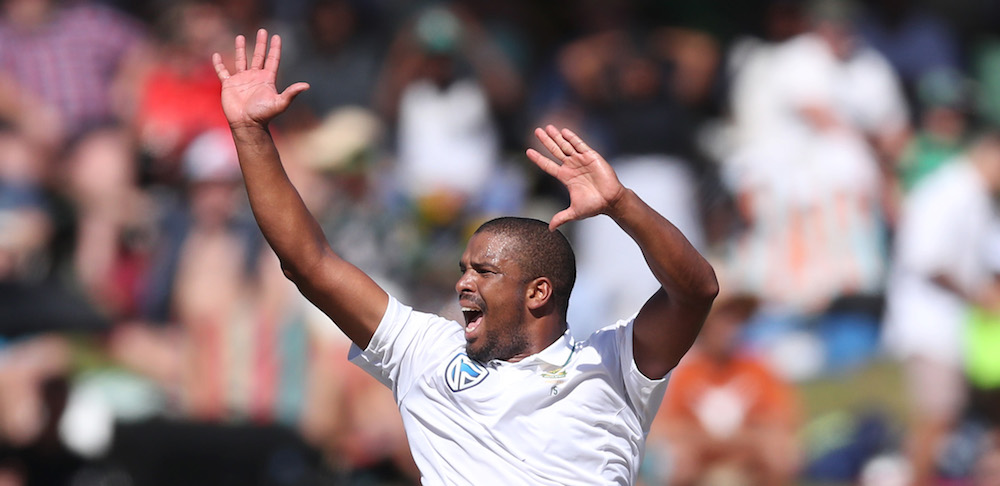
By Nasri Alexander
Vernon Philander will always be remembered by me as “The Pro” that conquered the World, writes Nasri Alexander.
It came as quite a surprise to many when, back in 2011, Proteas captain Graeme Smith said that Vernon Philander would be making his debut in a Test match against Australia at Newlands.
A surprise to many but not all, as Philander had been toiling away in domestic first-class cricket – first for Western Province and then the Cape Cobras since he made his bow in the four-day format back in 2004.
Philander often carried the Cobras bowling attack for many seasons, bowling maiden after maiden and taking wicket after wicket in front of virtually no spectators.
His domestic record at the time was unmatched but he continued to be ignored at the highest level with questions being asked about his pace. The standard of the domestic game was also sited as a reason for him not being recognized for higher honours.
Philander though did not seem to be bothered and just kept ploughing away with the goal to master his craft, not only for the Cobras, but he also at The multi-sports complex called Florida Park in Ravensmead, where he spent many hours.
“The Vern” grew up in the humble surroundings of Ravensmead and it was at Florida Park, with Tygerberg Cricket Club, that his skills were honed and perfected and where he still carries the nickname of “The Pro”.
It was on a summer’s afternoon early in 2010 when my local club side played a game against Tygerberg CC at Florida Park on the ‘B’ field, when Philander – nursing his way back from an injury – came wandering onto the field next to ours with a box of cricket balls and a few cones.
He marked his run-up, placed the cones on an imaginary length and bowled to one of the local coaches who was catching the balls with a baseball mitt, belting words of encouragement.
I was fielding on the square-leg boundary at the time and Philander’s “training session” was taking place virtually next to the rope and I couldn’t help but admire this professional cricketer’s dedication, as he honed his skills in extreme heat.
It would be the next year, November 2011, when I was lucky enough to be at Newlands as a fan when Philander made his debut against the Aussies in an extra-ordinary game that saw him take 5/15 in the second innings. I immediately had a flashback to that hot afternoon against Tygerberg CC.
The young man from Ravensmead was certainly in a hurry to show he belonged at the highest level as he made the red ball talk on his way to 30 wickets in his first four Test matches. Despite this incredible return, questions were still being asked.
How will he perform away from home? Will he cope on flat wickets?
The “Big Vern” just swatted those doubts away as he snaffled 21 scalps in a three-match series in New Zealand, before getting his name on the Lord’s honours board as the Proteas conquered England, followed by Australia.
When speaking to cricket-minded people – at home and from around the world – about Philander, one word keeps popping up – SKILL.
Skill to land the ball in the same area time after time and also skill to think about what you want the ball to do and then execute it to perfection.
That skill set was in full display when he trapped India captain Virat Kohli LBW in the second innings of the New Year’s Test at Newlands in 2018.
Three outswingers was followed by a ball that nipped back, which saw one of the best batsmen in the world fell into Philander’s web.
Australia great Shane Warne calls him the “surgeon” as his precision and accuracy is immaculate, reminding the Aussie spin king of his former international teammate Glenn McGrath.
When the stadium announcer at Newlands informs the crowd: “And now from the Wynberg End, it’s Vernon Philander!” and the song Blurred Lines by Robin Thicke featuring T.I. and Pharrell belts out, a hush comes over the iconic venue.
Everyone sits in anticipation to witness what might unfold. We know what is coming but as purists of the game we still lick our lips.
When Philander announced on Monday 23 December that he would be hanging up his boots at the highest level at the age of 34, he did so with the knowledge that he achieved all he could in the Proteas Test jersey.
I have heard many nicknames given to Philander by fans and on social media over the years – “The surgeon”, “Ravensmead Wrecker” and “Ravensmead Express”.
But the one I will always remember him as is “The Pro” from Tygerberg Cricket Club.
It is fair to say that the fella from Ravensmead has mastered his art and conquered the world.
LEGENDS WITH RAVI | EPISODE 1: "Paul Adams is South Africa's Best-ever Spinner"
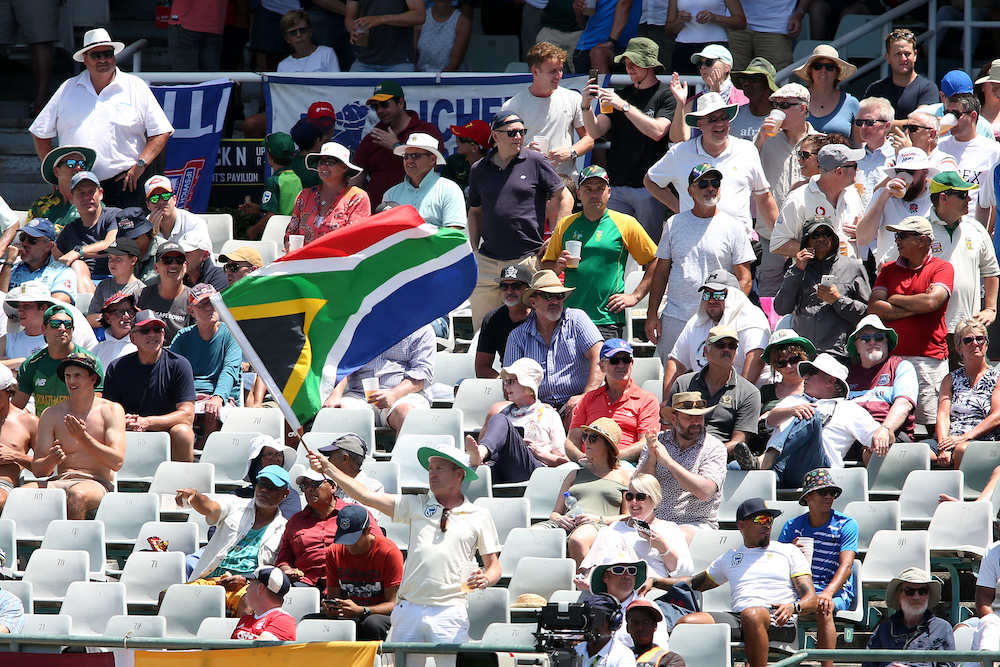
“THE DAY I FELL IN LOVE WITH TEST CRICKET”
By Bilal Hanware
Avid cricket fanatic Bilal Hanware shares his story of how he fell in love with the longest format.
The school holidays were always an exciting prospect for children. The length of the holiday usually meant that by January I started to feel bored with the amount of free time that I had and eagerly anticipated the start of the school year.
It was a Wednesday morning on the 2nd of January 2008 when my father decided to surprise me with a ticket to watch cricket at Newlands. I was eager to see the Proteas play as I was an avid fan of cricket and loved playing the game. I had never watched test cricket live before.
I grew up in East London where live international fixtures were few and far between and live Test cricket matches seemed to be a non-existent feature.
I entered the stadium and began to look for my block in the president’s pavilion which would later become my favourite seating area in the stadium. I climbed the stairs and walked into the stands. I had never seen a more picturesque view before. Table Mountain, slightly visible to my left, was a jaw-dropping sight. The outfield looked pristine.
Makhaya Ntini stood in the distance at the top of his run-up… He ran in to bowl and narrowly missed the outside edge of the “Universe Boss” Chris Gayle. The one half of the crowd roared with excitement and the other let out groans at the sight of Gayle’s narrow escape.
The Newlands atmosphere was unlike anything I had ever experienced. Despite being a Wednesday morning, the stadium was already at near capacity, the crowd buzzing all around. I fell instantly in love with the format and would return for the remaining days of the Test match. I braved the weather on the final day of the Test match and waited eagerly for the rain to dissipate.
Umbrella in hand, I waited for hours until the rain finally abated and the covers eventually came off. The West Indies were bowled out for 262 and the Proteas needed 185 for victory. Graeme Smith came out to bat with AB de Villiers and played an aggressive knock to put pressure on the visitors. He scored a quick 85 from 79 deliveries before being dismissed by Rawl Lewis. Kallis and Prince would eventually take the Proteas to victory.
My love for the format and the game in general subsequently grew.
I always find it to be the height of irony that the slowest and longest format of the game is undoubtedly the most exciting. A true test of mental strength, skill and fitness. Test cricket is so aptly named.
Long live the game.
Follow Bilal on Twitter
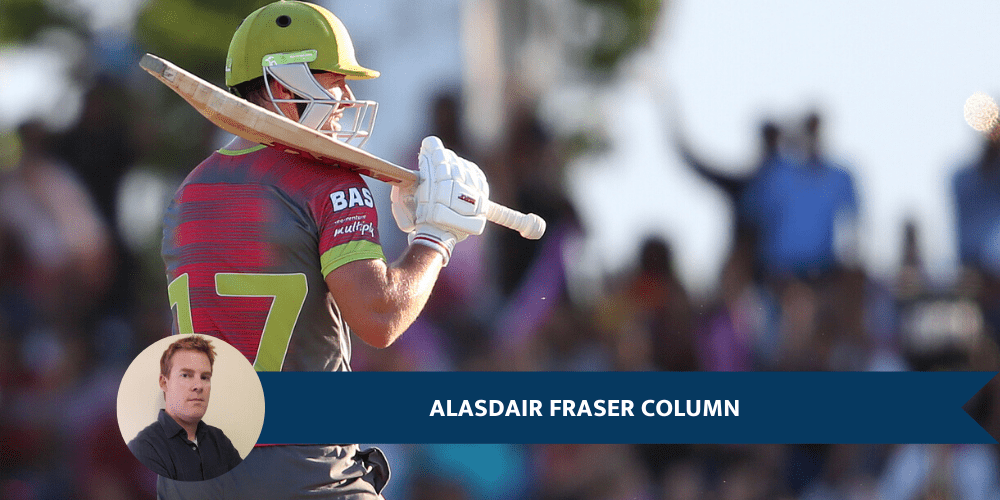
Solidarity Cup opens door for AB's return
By Alasdair Fraser
While the Solidarity Cup is a noble cause to raise funds, its relevance in the current cricketing climate remains a mystery but at least we know AB de Villiers’ return to the international fold is imminent, writes Alasdair Fraser.
So cricket is back. On 18 July in fact. The new date set for the 3TC tournament. But what is this cricket? Did we really need a complicated format dreamed up by a banker? The timing is bizarre given CSA’s woes, which have been compounded by Clive Eksteen’s revelations and his application to the CCMA for unfair dismissal.
The current cricketing world already has three formats in which the game is played. Try explaining to a German tourist how cricket works. Not easy, right? Cricket is a complicated game, especially loved by stats gurus, accountants, and mathematicians. You can literally lose yourself in the numbers.
I will watch the match with a perverse fascination and Paul Harris the banker could be on to a winning formula. Personally, I have always loved the idea of a ‘Test’ two innings per team T20 shootout.
Is this strange three-team format worth it for just one day, though? It’s a bit like that tennis game I played as a youngster called American Doubles when you have just three players. To be honest, it wasn’t my favourite.
Regardless of the format, though, the focus must be of where our top players are in terms of performance, match fitness and their personal state. It may seem like a lifetime but cricket will resume and sooner than you think. I guess jazzing it up by killing ‘three’ birds with one cricket ball will suffice.
Which leads me to my main point: scan to the top of the three team-sheets and you will notice one of them is being led by AB de Villiers. This is not a publicity stunt. I have no doubt that De Villiers will be back in the colours of South Africa.
This ongoing soap opera has been running for over a year now. AB’s shelf life is shortening by the day and it would be an unpleasant blot on his international career for it to fizzle out like this. Our game has been broken for some time now and AB can help rebuild it.
Now is the time to come together and create a common goal that all our top players can buy into. And that includes AB de Villiers the Protea.
I have never doubted his service to the Protea badge and it’s time to forget the past and focus on the present, because our cricket was hurting before the pandemic broke. It needs to be fixed and thankfully we witnessed some shining lights against Australia in February.
Since then, the South African cricketing public have been starved of any action and content around the game – be it internationally and locally. It may be rugby season, but up on the Highveld it’s perfect for cricket.
The window of opportunity for CSA to show they are doing something about the COVID-19 pandemic is now and they should be applauded for being proactive by trying something completely different. They have nothing to lose and everything to gain.
Video Playlist
The Podcast Live Show:
Square-Leg Gully Live Show:
Magazine info
Editorial Director
Khalid Mohidin
IT and Technical Director
Faizel Mohidin
Contributors
Abhai Sawkar
Alasdair Fraser
Craig Stirton
Daniel Orsmond
Khalid Mohidin
Marc Jacobson
Nabeelah Fakier
Nasri Alexander
Ongama Gcwabe
Ravi Reddy
Graphics
Khalid Mohidin
Mohammed Hoosain
Images
BackpagePix
Video Binge List:
On Lockdown Series
The Podcast Show
Legends with Ravi
